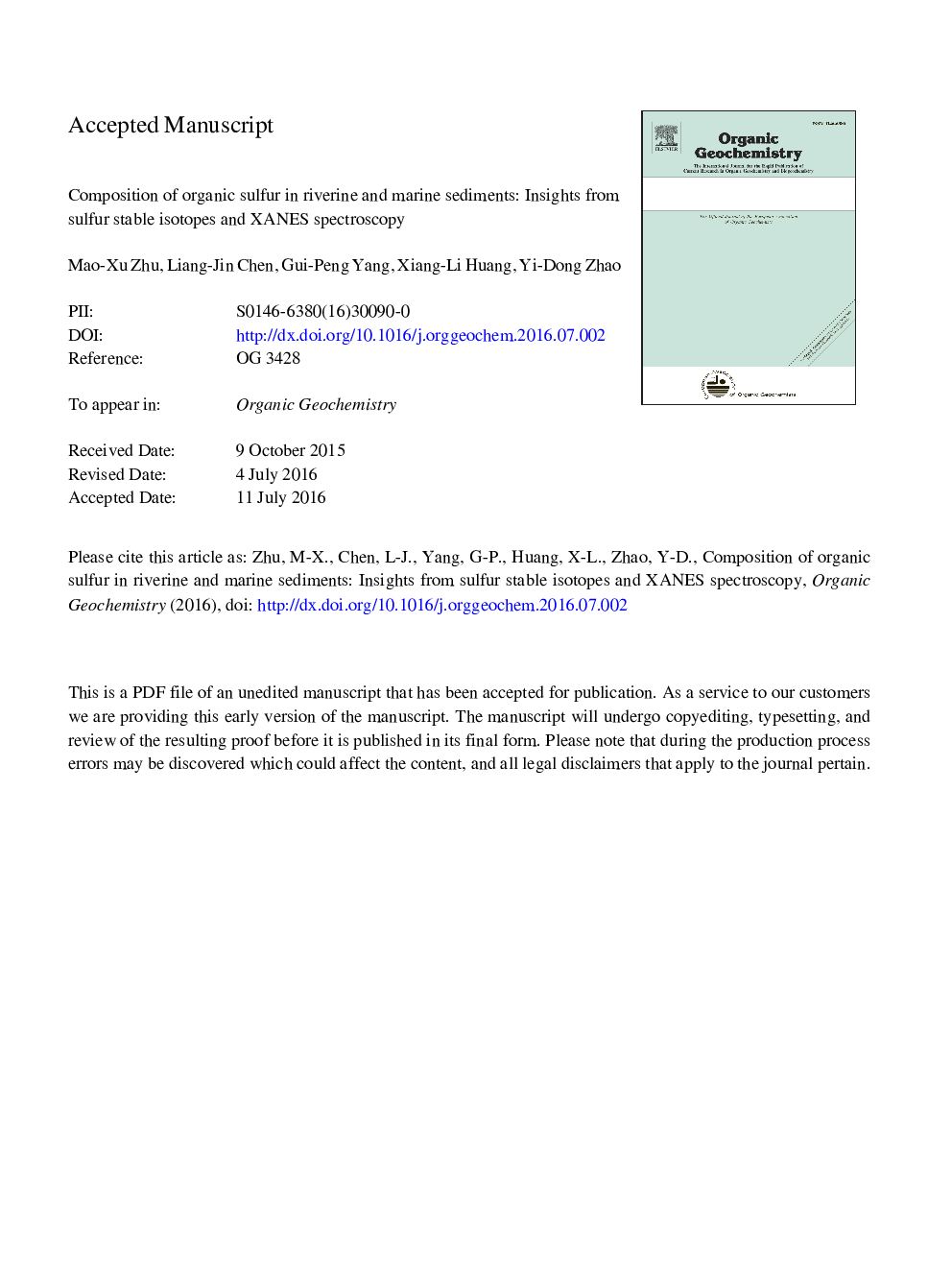| کد مقاله | کد نشریه | سال انتشار | مقاله انگلیسی | نسخه تمام متن |
|---|---|---|---|---|
| 5161653 | 1502264 | 2016 | 44 صفحه PDF | دانلود رایگان |
عنوان انگلیسی مقاله ISI
Composition of organic sulfur in riverine and marine sediments: Insights from sulfur stable isotopes and XANES spectroscopy
دانلود مقاله + سفارش ترجمه
دانلود مقاله ISI انگلیسی
رایگان برای ایرانیان
کلمات کلیدی
موضوعات مرتبط
مهندسی و علوم پایه
شیمی
شیمی آلی
پیش نمایش صفحه اول مقاله

چکیده انگلیسی
Sulfur isotopes and X-ray absorption near edge structure (XANES) spectroscopy were combined to characterize/compare three operational organic sulfur (OS) pools, i.e. fulvic acid sulfur (FA-S), humic acid sulfur (HA-S) and non-chromium reducible organic sulfur (non-CROS) in marine [the East China Sea (ECS) and Jiaozhou Bay (JZB)] vs. riverine [Yangtze River (YR) and JZB tributaries] sediments. XANES results indicate that in marine sediments high valency S was the dominant OS functionality in both HA-S and FA-S, while non-CROS was dominated by low valency OS (80-92%). In the riverine sediments FA-S was dominated by high valency OS, while the average fractions of low and high valency OS in HA-S were comparable. The isotopic composition of FA-S (δ34SFA-S) and HA-S (δ34SHA-S) indicated that a substantial fraction of sulfide was incorporated into FA via sulfurization in the marine sediments, whereas terrigenous OS was almost the sole important source of HA-S. Compared with the ECS sediments, JZB sediments had more depleted 34SFA-S and a higher fraction of highly reduced FA-S due to eutrophication induced sulfurization. Relative to riverine FA-S, substantial sulfurization had not resulted in an increase in the fraction of highly reduced FA-S in marine sediments. This implies that the terrestrial systems may be much more favorable for the formation and/or preservation of highly reduced biogenic FA-S than the marine settings. The fraction of highly reduced HA-S in the JZB and its tributaries was similar, whereas the fraction was much lower in the ECS than in the YR. This indicates that highly reduced HA-S moieties in the YR may have been subject to extensive mineralization loss during transport in the large riverine/estuarine system, whereas the process in the JZB tributaries may be much weakened due to a relatively small catchment area. Distinct differences in isotopic and structural composition between humic-S (FA-S + HA-S) and non-CROS in the ECS sediments indicate that a combination of S isotopes and S-XANES is needed for characterizing the two operational pools for a better understanding the nature of OS in the ocean.
ناشر
Database: Elsevier - ScienceDirect (ساینس دایرکت)
Journal: Organic Geochemistry - Volume 99, September 2016, Pages 102-112
Journal: Organic Geochemistry - Volume 99, September 2016, Pages 102-112
نویسندگان
Mao-Xu Zhu, Liang-Jin Chen, Gui-Peng Yang, Xiang-Li Huang, Yi-Dong Zhao,